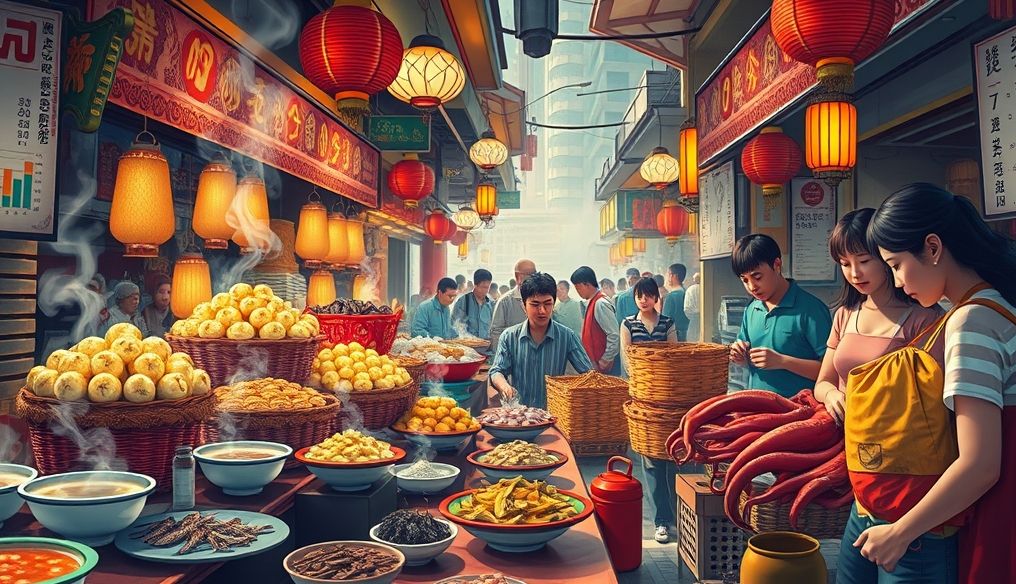What are the Strangest Foods You Should Try in Asia Before You Die?
Asia, a continent of contrasts and beauty, offers unique experiences at every turn. Whether you're an adventure seeker or looking for new experiences, Asian cuisine offers something you never imagined. From crispy insects to dishes that challenge your senses, here's a list of the strangest foods you should try before you kick the bucket.
1. Bird's Nest Soup - China
Description: Bird's nest soup is a traditional Chinese dish considered a delicacy. The nest is made from the saliva of the swiftlet bird, which builds its nests in caves.
Taste and Texture: The soup has a light, almost neutral flavor, but it takes on the flavor of the broth it's cooked in. The texture is slightly gelatinous and crunchy.
Alleged Health Benefits: Bird's nest soup is believed to promote general health, improve skin, and strengthen immunity. Although scientific studies are limited, traditional Chinese medicine has recommended it for centuries.
Why is it strange? The strangeness lies in the main ingredient: bird saliva. Imagine eating a dish made from a substance secreted by an animal to build its home!
2. Century Egg - China
Description: Century egg, also known as thousand-year egg, is a preserved egg (usually duck, chicken, or quail eggs) that is fermented in a mixture of clay, ash, salt, lime, and rice husks for several weeks or months.
Taste and Texture: Century egg has a strong, pungent ammonia-like smell. The taste is salty and strong, with a flavor resembling rotten cheese. The texture is gelatinous and smooth.
Why is it strange? Its dark appearance and strong smell make it unattractive to some. The fermentation process changes the color of the egg white to black or dark brown, and the yolk turns dark green or gray.
3. Balut - Philippines
Description: Balut is a developing duck embryo that is boiled and eaten in the shell. It is a common street food in the Philippines, Vietnam, and Cambodia.
Taste and Texture: Balut features a mix of flavors and textures. The broth inside the egg is salty and delicious, while the embryo contains small bones, cartilage, and a meaty texture.
Why is it strange? The idea of eating a whole animal embryo can be shocking to some. Seeing the shape of the small bird inside the egg makes the experience even stranger.
4. Inago - Japan
Description: Inago are fried or boiled grasshoppers seasoned with soy sauce and sugar. It is a traditional dish in rural areas of Japan.
Taste and Texture: Inago has a salty and sweet taste, with a crunchy exterior and a soft interior.
Why is it strange? Eating insects is not common in many cultures, but in Japan, Inago is considered a good source of protein and is inexpensive.
5. Sannakji - South Korea
Description: Sannakji is a small octopus cut into small pieces and served raw. It is often seasoned with sesame oil and toasted sesame seeds.
Taste and Texture: Sannakji has a fresh taste and a light marine flavor. The texture is rubbery and sticky, and the octopus is still moving on your plate and in your mouth!
Why is it strange? The idea of eating a sea animal that is still moving can be terrifying to some. Sannakji must be chewed well to avoid sticking to the throat.
6. Hákarl - Iceland (Although not in Asia, worth mentioning for comparison)
Description: Hákarl is fermented shark. The shark is buried in sand and gravel for several weeks, then hung to dry for several months.
Taste and Texture: Hákarl has a very strong ammonia-like smell. The taste is strong and pungent, and the texture is rubbery.
Why is it strange? The fermentation process is necessary to make the shark meat edible, as fresh shark meat is poisonous. The strong smell and pungent taste make Hákarl a real challenge for food lovers.
7. Steamed Cobra with Blood - Vietnam
Description: A unique Vietnamese food experience, where cobra is steamed and often served with its fresh blood mixed with alcohol.
Taste and Texture: The cobra meat is said to taste like chicken, but the main event is drinking the blood, which some consider an aphrodisiac.
Why is it strange? Drinking the blood of an animal, especially a cobra, is considered very strange and unusual in most cultures.
8. Fried Beetles - Thailand
Description: Fried beetles are sold as a snack in Thai street markets.
Taste and Texture: Crunchy on the outside and soft on the inside, with an earthy taste.
Why is it strange? Eating insects is not common in many cultures, although they are an excellent source of protein.
9. Penis Soup - China
Description: A traditional Chinese soup believed to enhance male sexual prowess. The main ingredient is the penis of an animal, such as a bull or deer.
Taste and Texture: The taste depends on the type of penis used and the broth, but the texture is often cartilaginous.
Why is it strange? Using animal genitalia in food is considered strange and unacceptable in many cultures.
10. Tuna Eyeballs - Japan
Description: Tuna eyeballs are sold in Japanese markets and cooked by boiling or steaming.
Taste and Texture: They are said to taste similar to squid or octopus, with a rubbery texture.
Why is it strange? Eating an entire eyeball can be unappealing to many.
Final Tip: Before trying any of these foods, make sure you buy them from a reliable source to ensure your safety. Enjoy your adventure in the world of Asian cuisine!




